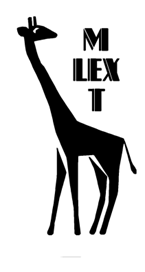About our project
The project is dedicated to the typology of constructions that describe spontaneous movements of parts of the body (compare "raise your head", "stand on one’s feet" or "wag the tail").
There are numerous descriptions of semiotically loaded gestures, such as "wringing one’s hands", "pouting one’s lips", "nodding one’s head", etc. (cf. Kreidlin 2002, 2013, Kreidlin, Letuchy 2006). However, semiotics is culture specific, which makes it difficult to build a typology on this material: the same movement of the head can mean YES in one language (as in English), but NO in another (as in Bulgarian).
Unlike semiotic gestures, non-semiotic ones present an attractive task for linguistic typology. The subject is also appealing because it touches upon several well-studied areas, such as the typology of verbs of motion (cf. Talmy 1985, 2000, Slobin 2004), the typology of body parts (cf. Andersen 1978, Koch 2008, Majid 2010), and the typology of causative constructions (Comrie, Polinsky 1993, Song 2001). At the same time, for each of these areas our constructions are peripheral and thus are rarely in the focus of attention of researchers.
The movement of parts of the body does not seem to be a prototypical movement of the object from the original point A to the final point B and does not share many of the properties that are mandatory for them.
Let’s first compare the "classical" type of movement such as moving things up from the first floor to the second with raising one’s hand: the latter has neither an the initial point of movement (from where do you raise your hand?) nor the final point (where do you raise your hand?).
Secondly, in order to raise, let’s say, a stone, we take it with our hand as an instrument. This is natural: since the movement of a stone is a causative situation, it often needs an external tool. However, we normally raise our own hands, legs, or head without the help of hands, merely by means of internal muscular contrations.
Finally, when lifting a stone, we forcefully detach it from the original surface (to then move it upwards. This does not happen with hands and feet: they still remain the inalianable parts of our body after moving.
It is easy to see that the displacement situations of interest to us are substancially non-standard. This means that ordinary verbs of motion in their usual sense do not apply to them. If they are applied, they will necessarily undergo a semantic shift. Languages can choose different metaphors to denote this movement and even choose predicates (constructions, phrases) with a special, narrow meaning that reflects exactly this movement of exactly that part of the body in precisely these conditions. Consider squat, purse one’s mouth, hold one’s hands behind one’s back and so on. We will be interested in the similarities and the dissimilarities of the semantic strategies chosen by different languages.
References
Крейдлин Г. Е. Невербальная семиотика / Григорий Ефимович Крейдлин //М.: Новое литературное обозрение. – 2002.
Крейдлин Г.Е. Мужчины и женщины в невербальной коммуникации. – Litres, 2013.
Крейдлин Г. Е., Летучий А. Б. Части тела в русском языке и в невербальных семиотических кодах //Русский язык в научном освещении. – 2006. – №. 12. – С. 2.
Andersen E. S. Lexical universals of body-part terminology //Universals of human language. – 1978. – Т. 3. – С. 335-368.
Comrie B., Polinsky M. (ed.). Causatives and transitivity. – John Benjamins Publishing, 1993. – Т. 23.
Koch P. Cognitive onomasiology and lexical change: Around the eye //From polysemy to semantic change: Towards a typology of lexical semantic associations. – 2008. – Т. 107. – С. 137.
Majid A. Words for parts of the body //Words and the mind: How words capture human experience. – 2010. – С. 58-71.
Slobin D. I. The many ways to search for a frog: Linguistic typology and the expression of motion events. – 2004.
Song J. J. Toward a typology of causative constructions. – Lincom Europa, 2001.
Talmy L. Lexicalization patterns: Semantic structure in lexical forms //Language typology and syntactic description. – 1985. – Т. 3. – №. 99. – С. 36-149.
Talmy L. Toward a cognitive semantics: typology and process in concept structuring, Vol. 2 //MA: MIT Press, Cambridge. – 2000.
